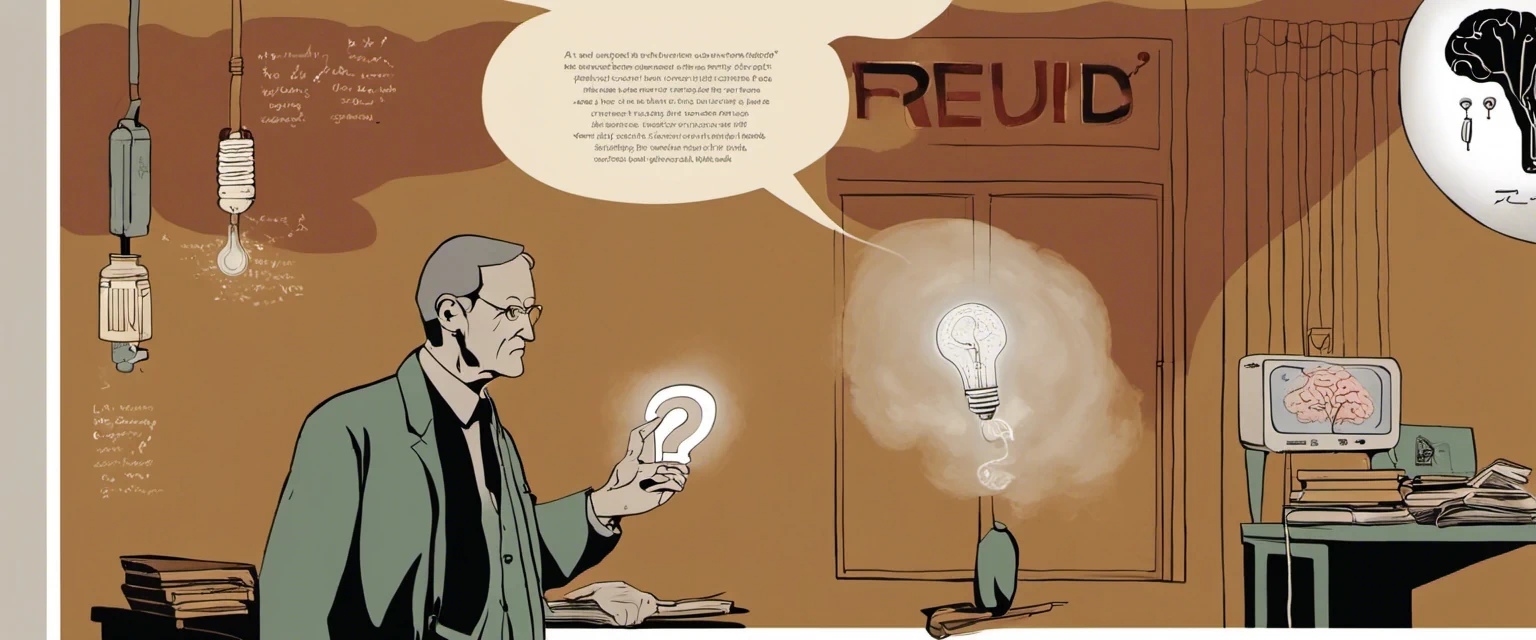—Freud: A Life for Our Time and The Interpretation of Dreams
In the realm of psychology and the intricacies of the human mind, few names resonate as profoundly as Sigmund Freud. Revered for his groundbreaking theories and pioneering contributions to the field, Freud’s influence extends far beyond the academic realm, permeating our everyday understanding of human behavior and shaping the way we perceive ourselves. Two works that shed light on the enigma and brilliance of Freud are Peter Gay’s monumental biography, “Freud: A Life for Our Time,” and Freud’s own seminal work, “The Interpretation of Dreams.
Peter Gay’s biography serves as a comprehensive, meticulously researched exploration of Freud’s life and the incredible intellectual journey that propelled him to become one of the most influential figures of the 20th century. By delving into Freud’s personal correspondence, diaries, and examining the cultural and historical context of his time, Gay presents a vivid portrait of the man behind the theories. The biography contextualizes Freud’s ideas within the socio-political climate of the late 19th and early 20th century, shedding light on the struggles, triumphs, and controversies that colored Freud’s intellectual pursuit. Through Gay’s masterful storytelling, readers are invited to witness the relationships, personal challenges, and internal demons that shaped Freud’s understanding of the psyche.
On the other hand, Freud’s “The Interpretation of Dreams” stands as a cornerstone of his oeuvre, representing a seminal work that revolutionized the way we approach dreams and their hidden meanings. In this groundbreaking text, Freud explores the intricate dream world, unearthing the unconscious desires and conflicts that manifest in our nightly visions. By dissecting dreams, symbols, and their underlying psychological significance, Freud not only illuminates the mysterious realm of dreams but reveals profound insights into the complexity of the human mind.
While both works examine facets of Freud’s life and theories, they do so through distinct lenses. Gay’s biography offers a panoramic view of Freud’s entire life, providing a nuanced understanding of his development as a psychologist and his cultural impact. On the other hand, Freud’s “The Interpretation of Dreams” delves into the depths of the human psyche, showcasing his theoretical concepts and approaches to unlocking the hidden meanings and desires within our dreams.
Through a comparative analysis of “Freud: A Life for Our Time” and “The Interpretation of Dreams,” this study aims to uncover the interconnectedness between Freud’s life and his theoretical framework. By tracing the trajectory of his personal and professional journey, alongside his exploration of dreams, we can gain an enriched understanding of the complex man who forever shaped the field of psychology. Within these pages lies the tantalizing promise of delving deeper into the mind of Sigmund Freud, deciphering the interplay between his life experiences and the revolutionary theories that still fuel countless investigations into the human psyche.
Brief Summary of Two Books
Freud: A Life for Our Time by Peter Gay
Freud: A Life for Our Time” by Peter Gay is a comprehensive biography that explores the life and work of Sigmund Freud, one of the most influential figures in the history of psychology. The book delves into Freud’s personal life, his upbringing in 19th century Vienna, and his various struggles and triumphs as he developed his revolutionary theories on the unconscious mind, psychoanalysis, and sexuality. Gay provides insight into Freud’s relationships with his family, colleagues, and patients, shedding light on the challenges he faced in introducing his ideas to a skeptical world. With a balanced approach, the biography examines both the strengths and limitations of Freud’s theories, discussing their immense impact on modern psychology while also addressing criticisms and controversies that have surrounded his work. Overall, “Freud: A Life for Our Time” offers a compelling portrait of a complex and influential figure, tracing the life and intellectual evolution of the man who forever changed our understanding of the human psyche.
The Interpretation of Dreams by Sigmund Freud
“The Interpretation of Dreams” by Sigmund Freud, published in 1899, explores Freud’s groundbreaking theories on the unconscious mind and the meaning of dreams. The book delves into the significance of dreams as reflections of repressed desires, fears, and conflicts within an individual’s psyche. Freud introduces concepts such as dream symbolism, interpretation techniques, and the role of sexual and aggressive impulses in dreams. Additionally, he discusses the importance of childhood experiences and examines case studies to illustrate his theories. Overall, “The Interpretation of Dreams” offers a comprehensive exploration of Freud’s psychoanalytic approach and its application in unraveling the hidden meanings behind dreams. His works include “Civilization and Its Discontents“.
Comparison between Two Books

Similarities in psychology
Both “Parallel Lives: A Life for Our Time” by Peter Gay and “The Interpretation of Dreams” by Sigmund Freud delve into psychology and offer valuable insights into the human mind:
1. Unconscious mind: Both books emphasize the importance of the unconscious mind in shaping human behavior. Freud’s “The Interpretation of Dreams” lays the foundation for psychoanalysis, showcasing his theories on how dreams serve as gateways to understanding the unconscious. Gay’s biography, “Parallel Lives,” explores Freud’s own journey in uncovering the unconscious and how it affected his life and work.
2. Mental processes and motivations: Both authors explore the inner workings of the mind, focusing on mental processes and motivations that drive human behavior. Freud’s psychoanalytic perspective looks at the different layers of the mind, including the id, ego, and superego, while Gay’s biography examines Freud’s psychological motivations and struggles, giving readers a glimpse into his own psyche.
3. Childhood experiences: Both books acknowledge the significance of childhood experiences in shaping adult behavior. Freud’s psychoanalytic framework revolves around the belief that early experiences, particularly those occurring in childhood, profoundly impact an individual’s development. Gay’s biography highlights Freud’s own childhood experiences and how they influenced his approach to understanding the human mind.
4. Symbolism and interpretation: Symbolism and interpretation play crucial roles in both works. Freud’s “The Interpretation of Dreams” emphasizes the symbolic nature of dreams and how they can be interpreted to uncover deeper meanings. Similarly, Gay’s biography delves into the symbolism and interpretation of Freud’s own life events, revealing the psychological significance behind his choices and actions.
5. The role of therapy: Both books discuss the importance of therapy in addressing psychological issues. Freud’s “The Interpretation of Dreams” introduced the concept of psychoanalysis as a therapeutic practice to help individuals uncover the root causes of their psychological difficulties. Gay’s biography illustrates how therapy not only influenced Freud’s own life but also his impact on the field of psychology.
In summary, both “Parallel Lives: A Life for Our Time” by Peter Gay and “The Interpretation of Dreams” by Sigmund Freud offer insights into psychology by exploring the significance of the unconscious mind, mental processes, childhood experiences, symbolism, interpretation, and therapy.
Divergences in psychology
Freud: A Life for Our Time by Peter Gay and The Interpretation of Dreams by Sigmund Freud provide different perspectives on the realm of psychology. While one focuses on the life and work of Freud himself, the other delves into Freud’s theories and concepts in detail.
In Freud: A Life for Our Time, author Peter Gay presents a comprehensive biography that explores Freud’s personal experiences and the societal context in which he developed his theories. Gay highlights the various influences that shaped Freud’s thinking, such as his upbringing, academic training, and his interactions with other intellectuals of his time. By examining Freud’s personal life, relationships, and the challenges he faced, Gay provides valuable insights into the context that influenced Freud’s psychological theories.
On the other hand, The Interpretation of Dreams is one of Freud’s major works, where he establishes the foundations of psychoanalysis. In this book, Freud dives deep into his theories surrounding the interpretation of dreams, unconscious desires, and the human psyche. He introduces concepts such as the id, ego, and superego, as well as his famous theory of Oedipus complex. The Interpretation of Dreams is a more theoretical and academic exploration of Freud’s psychological concepts, aiming to provide readers with a comprehensive understanding of his psychoanalytic framework.
The divergence between these two books lies in their scope and focus. Freud: A Life for Our Time emphasizes the biographical aspects of Freud’s life, offering a broader understanding of the man behind the theories. It explores the external influences on Freud’s development as a psychologist, shedding light on his motivations, struggles, and personal experiences that shaped his theories. Gay’s book provides a more holistic perspective on Freud’s psychological contributions.
In contrast, The Interpretation of Dreams delves deeper into Freud’s theoretical constructs and explores his pioneering concepts in psychology. This book caters more to readers interested in understanding Freud’s psychoanalytic theories in detail, rather than providing a comprehensive biographical account.
Overall, Freud: A Life for Our Time and The Interpretation of Dreams complement each other by offering different angles on the subject of psychology. While one focuses on the man himself, the other delves into the theoretical framework of his ideas. Readers interested in Freud’s personal life and the context in which he developed his theories would benefit from Gay’s biography, while those seeking a more in-depth understanding of Freud’s concepts should turn to The Interpretation of Dreams.

Conclusion
Both “Freud: A Life for Our Time” by Peter Gay and “The Interpretation of Dreams” by Sigmund Freud are widely regarded as significant works in the field of psychology. However, the two books serve different purposes and offer distinct perspectives on Freud’s life and ideas.
“Freud: A Life for Our Time” by Peter Gay is a comprehensive biography of Sigmund Freud. It provides a detailed account of Freud’s life, exploring his personal experiences, intellectual journey, and the socio-cultural context of his time. This book is a substantial resource for understanding Freud as a person and the development of his theories. If you are interested in gaining a deeper understanding of Freud’s life and how it influenced his work, this biography is a valuable read.
On the other hand, “The Interpretation of Dreams” is one of Freud’s seminal works. In this book, Freud delves into the importance of dreams and how they relate to the unconscious mind. He introduces concepts such as dream symbolism, latent content, and the interpretation of dreams as a means of accessing repressed desires and conflicts. If you are specifically interested in Freud’s theories on dreams and the unconscious, reading “The Interpretation of Dreams” is essential.
The choice between the two books ultimately depends on your specific interests. If you are more inclined towards a comprehensive understanding of Freud’s life, including his personal experiences and the socio-cultural factors that shaped him, then “Freud: A Life for Our Time” by Peter Gay is a suitable option. If your focus is primarily on understanding Freud’s theories related to dreams and the unconscious, then “The Interpretation of Dreams” is the more appropriate choice.
In conclusion, both books have their merits and offer valuable insights into Freud’s life and ideas. Depending on your interests, one book may be more intriguing or relevant to your reading preference.



